May 27, 2014 | BEP, currency, dollar, education, news, video
Time has come that there is once again change coming to the money in your pocket. This one is so subtle that you may not even notice the difference.
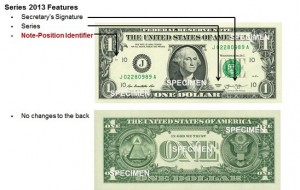
Changes to the $1 Note
For those who do not collect currency, the note-position identifier is the little letter followed by a number that identifies where on the sheet the note was printed. On the $1 FRN, the note position identifier is on the left side of the front of the note under the “1” and next to the Federal Reserve branch number.

Change in the Note Position Identifier
As part of this change, the BEP is also changing the position identifier code mechanism. On the 32 note sheets, the notes printed four-across and eight-down were divided into four eight-note blocks (or quadrants). Each block was given a number in columns where the top-left quadrant was #1, the bottom left was #2, top-right was #3, and bottom-right was #4. Within the quadrants, the note positions were lettered A-D in the first column and E-H in the second column. If you found a note with the note-position code of H3, the note would have been printed in the fourth row and fourth column of the sheet.
The new 50 note sheets simplifies the note-position numbering by assigning a letter to each of the 10 rows (A-J) and a number to each of the five columns. On this sheet, H3 would now be located on the eighth row and third column.
Position Identification layout of 32-note sheet
| A1 |
E1 |
A3 |
E3 |
| B1 |
F1 |
B3 |
F3 |
| C1 |
G1 |
C3 |
G3 |
| D1 |
H1 |
D3 |
H3 |
| A2 |
E2 |
A4 |
E4 |
| B2 |
F2 |
B4 |
F4 |
| C2 |
G2 |
C4 |
G4 |
| D2 |
H2 |
D4 |
H4 |
Position Identification layout of 50-note sheet
| A1 |
A2 |
A3 |
A4 |
A5 |
| B1 |
B2 |
B3 |
B4 |
B5 |
| C1 |
C2 |
C3 |
C4 |
C5 |
| D1 |
D2 |
D3 |
D4 |
D5 |
| E1 |
E2 |
E3 |
E4 |
E5 |
| F1 |
F2 |
F3 |
F4 |
F5 |
| G1 |
G2 |
G3 |
G4 |
G5 |
| H1 |
H2 |
H3 |
H4 |
H5 |
| I1 |
I2 |
I3 |
I4 |
I5 |
| J1 |
J2 |
J3 |
J4 |
J5 |
BEP has begun to deliver the new notes to the Federal Reserve currency distribution operations in all 12 Federal Reserve district branches. These new notes will enter circulation as per the policies of each branch. BEP has not said whether they will sell the 50-note sheets as part of their uncut currency products.
The $1 FRN is the first note to be printed on 50-note sheets. Over time, the BEP will transition the printing of other notes to 50-note sheets with the only design change being the subtle change in the note-position identifier.
As part of this change, the Federal Reserve created a video explaining the changes. You can watch the video here:
Images courtesy of the Bureau of Engraving and Printing.
May 26, 2014 | celebration, commentary, history, medals, US Mint
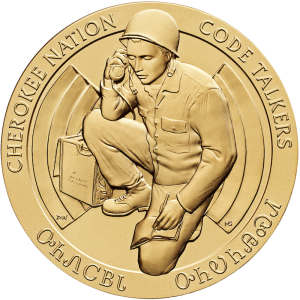
Cherokee Nation Code Talkers Medal
The next year, southern states began their own Memorial Days to honor their soldiers who died during the war. No specific date was used but occurred in late April through June. By 1880, there was a more organized Confederate Memorial Day. These celebrations honored specific soldiers to commemorate the Confederate “Lost Cause.” By 1913, a sense of nationalism saw a commemoration of all soldiers that have died in battle.
In the north, the fraternal organization of Civil War veterans The Grand Army of the Republic began organizing “Decoration Day” in 1868. Decoration Day was to honor the fallen by decorating the graves of Union soldiers with flowers and flags. Ceremonies included speeches that were a mix of religion, nationalism, and a rehash of history in vitriolic terms against the Southern soldiers. The acrimony against the South began to subside by the end of the 1870s.
Memorial Day did not take on national significances until after World War I. Rather than being a holiday to remember those of died in service during the Civil War, the nation began to recognize all those who gave the ultimate sacrifice during all conflicts. By the end of World War II, most of the celebrations were renamed from Decoration Day to Memorial Day. Memorial Day did not become an official holiday until 1967 and its date changed from the traditional May 30 to the last Monday of the month by the Uniform Holidays Act (Public Law 90-363, 5 U.S.C. § 6103(a)) in 1968.
Regardless of how you view the current world conflicts, the men and women who serve in our military deserve the honor and respect for their service. Pray for their ability to safely return home.
We will resume numismatic writings shortly.
May 15, 2014 | coin design, coins, national park quarters
Too many serious topics lately. Let’s have a little numismatic fun.
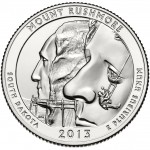 It was a busy day. While I really wanted to go out for lunch, all I had time for was to go to the cafeteria in the building where I work to get something quick. After settling on something I went to pay handing the cashier a piece of paper with the portrait of Andrew Jackson. In the change returned were three quarters. Most of the time I will just drop the change in my pocket and check it out later. But on this day, I took a glance at the coins and something struck me. Well, it didn’t strike me but it looks like something struck one of my quarter. Twice!
It was a busy day. While I really wanted to go out for lunch, all I had time for was to go to the cafeteria in the building where I work to get something quick. After settling on something I went to pay handing the cashier a piece of paper with the portrait of Andrew Jackson. In the change returned were three quarters. Most of the time I will just drop the change in my pocket and check it out later. But on this day, I took a glance at the coins and something struck me. Well, it didn’t strike me but it looks like something struck one of my quarter. Twice!
Closing my hands around the coins I walked away from the cash register and found a place I could stop to better examine what I had. Did I just find a rare double-strike quarter? Is it really an error? How much could it be worth?
Putting down my lunch container, I opened my hand and found quarters. Not just one but three quarters. Three 2013 Mount Rushmore quarters. It was not a double-strike but the double-image of the side-by-side portraits that fooled me.
And this happened more than once. If I take a quick glance at change that contains the Mount Rushmore quarters I get the impression that I found a double-struck coin.
The Mount Rushmore quarter has to be one of the better designs of the America the Beautiful Quarters® Program. Rather than attempting to be a pretty postcard-like image of the place of honor, the design is more about the sculpting of the impressive monument.
So be careful when glancing at your change. Those two faces side-by-side is not a double-strike or double-die. It is just a portrait of a portrait of George and Thomas being immortalized in granite.
May 13, 2014 | ancient, coins, policy
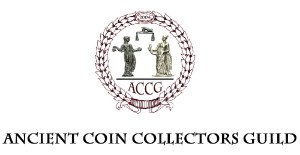 Before I begin today’s missive, please read the story I wrote about my friends who were arrested at the airport of a foreign country after digging up the $20 worth of ancients coins they found on a beach while playing in the sand. Go ahead… (click here) I’ll wait!
Before I begin today’s missive, please read the story I wrote about my friends who were arrested at the airport of a foreign country after digging up the $20 worth of ancients coins they found on a beach while playing in the sand. Go ahead… (click here) I’ll wait!
It is difficult to ignore the law of unintended consequences of Cultural Property Implementation Act (CPIA; 19 U.S.C. §§ 2601 et seq.) and how it is implementation by the State Department’s Cultural Property Advisory Committee (CPAC). Unfortunately, they are at it again.
CPAC will hold meetings on June 2-4, 2014 to review a new cultural property request from the Government of the Arab Republic of Egypt seeking import restrictions on archaeological and ethnological material. As with all of the other Memos of Understand (MOU), it will include ancient coins, even those that are common for ancient collectors and will also contain fuzzy language to make it look like Egypt could try to seek the return of undocumented items no matter when they were purchased.
The Ancient Coin Collectors Guild (ACCG) needs your help to make sure that the MOU between the United States and the Arab Republic of Egypt does not turn ancient coin collecting into a hobby where collectors have to look over their shoulders to watch out for foreign agents looking to confiscate their collections. This is not conspiracy theory talk. It has actually happened. Read the account by Patrick Heller in this article printed in Numismatic News (see the paragraph beginning with “Number four….”).
I ask that you support the ACCG and its efforts to prevent the government overreach into coin collecting by asking the State Department to “Exempt Ancient Coins” in whatever words or with whatever reasons you wish to offer. All you have to do is go to http://www.regulations.gov/#!docketDetail;D=DOS-2014-0008 and click on the blue “Comment Now” button on the right side of the page.
Comments are due by WEDNESDAY, May 14, 2014 before midnight.
Your effort is important and will be very much appreciated by the ACCG and the entire collecting community.
May 12, 2014 | base metals, cents, coins, nickels, RCM, Royal Mint, US Mint
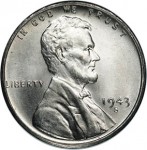
U.S. cents have been made of copper, steel, and copper plated zinc. What’s next?
Although the U.S. Mint does not define who they consider stakeholders but does mention the “coin industry” in one paragraph, the guideline questions are clearly targeted to the coin-operated machine industry. Coin-op machines are more than the soda and candy machines that may be in the break room where you work. These machines include toll booth machines, machines that produce bus and/or train fare cards, parking meters, game machines, and even the few pay telephones that are still in use. Everything that accepts coins will have to be replaced, repaired, adjusted, or scrapped should there be a change in coinage metals.
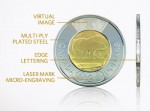
The new technology used by the Royal Canadian Mint to protect the Toonie (C$2)
In the United Kingdom, the Bank of England and law enforcement is engaged in a difficult fight against counterfeit £1 coins. Sources estimate that between 3-percent of the £1 coins in circulation are fake amounting to more than 45 million counterfeit coins. These fakes are so convincing and very well constructed that they can be successfully used in vending machines for payment including in London’s Underground. In an attempt to stem the problem, the Royal Mint has designed a new £1 coin to be circulated by 2017 in hopes to cut the counterfeiting rate.

New edge view of the coin the Royal Mint hopes will be able to thwart counterfeiters.
The coin-operated businesses in Britain are beginning to complain about the changes even though they are being given nearly three years to adjust. For their systems, the new coins will have a different weight, specific gravity, and the electromagnetic signature will differ from the current coin. Every system from the Underground to parking systems to food and beverage vending machines will have to be upgraded to accept the new coins. One report estimates that it will cost up to £50 million (approximately $82.3 million) just to update parking systems.
The Automatic Vending Association, the U.K.’s vending industry trade group, estimates that the new coin will costs its members over £100 million ($168.5 million) to convert their machines.
Expect the costs in the United States to be much higher mainly because of scale. The National Automatic Merchandising Association (NAMA), the $45 billion per year vending industry trade association in the United States, has already issued a report saying that it will cost from $100 to $500 per machine to convert them to accept new coinage.
The American Amusement Machine Association (AAMA) has come out against any change in U.S. coinage. It was reported that AAMA president John Schultz said to leave the coinage alone “because it works, rather than risk the costly consequences.” AAMA has not provided an estimate for those costly consequences.
The last significant change in coinage composition was in 2000 on the introduction of the Sacagawea “Golden” dollar coin. Following the debacle of the Susan B. Anthony small dollar coin that was mistaken for a quarter, the coin was redesigned without a reeded edge and given a golden color by adding manganese to the metals mix. Although this change primarily impacted the gaming industry that relied on the dollar coin, the vending machine industry did respond by converting old machines and manufacturing new ones that accepted the new coin.

The change to copper-coated zinc cents created a seven coin set for 1982
Any discussion of coin composition changes has to include the change from silver to clad coinage. When President Lyndon B. Johnson signed the Coinage Act of 1965 (Pub. L. 89-81) into law on July 23, 1965, the composition of the dime and quarter dollar was change from 90-percent silver and 10-copper to 75-percent copper and 25-percent nickel bonded to a core of pure copper. This mix of metals was selected so that the coins would have an electromagnetic signature that was very similar to their silver counterparts. The half-dollar was reduced to 40-percent silver surrounding a pure copper core.
This change in coinage was done for the same reason that congress has asked the U.S. Mint to study alternative metals: the cost of materials and labor to make the coins is higher than the face value of the coin. As of the Fiscal Year 2013 (October 2012-September 2013) Annual Report, it costs the U.S. Mint 1.83 cents in labor and materials to manufacture the one cent coin and 9.41 cents for the five cents coin.
As a comparison, the cost for the dime including labor and materials is 4.56 cents per coin while the quarter dollar costs 10.5 cents to make.
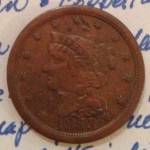
1853 Braided Hair Half Cent Obverse – The last lowest denomination coin eliminated by the congress.
- Does the U.S. eliminate the one cent coin?
- Does the U.S. eliminate the one dollar note in favor of a coin?
- If a transition to new metals is approved, does the government provide economic assistance to small businesses and sectors that will feel a bigger impact from this change?
- Will the federal government provide assistance to communities to help convert municipal services to be able to take the new coins?
- Should the U.S. Mint, a government agency, be allowed and/or required to earn a profit from its operations?
- How will the people be educated on the new coinage?
- What role will the Federal Reserve play?
Since the U.S. Mint did not define who their stakeholders are, it is fair to say that the stakeholders are all citizens of the United States. If you would like to comment, the U.S. Mint is looking for input on the following factors:
Costs to convert to circulating coins composed of alternative metals given the following possible changes to coins:
- Weight
- Electromagnetic signature
- Visual changes, such as color and relief
Transition time needed to introduce a circulating coin composed of an alternative metal.
Comments on how best to inform and educate both affected industries and the public on changes to circulating coins.
Environmental impact from the use of circulating coins composed of alternative metals.
Other issues of importance not identified above.
When commenting, note that the U.S. Mint said it is not considering aluminum alloy metals.
Responses are due to the U.S. Mint 60-days following its printing in the Federal Register (April 10, 2014 making the due date June 9, 2014). Electronic comments can be sent to Coin.StakeholdersResponse@usmint.treas.gov. If you prefer to send your comments the traditional way, mail them to Coin Stakeholders Response, Office of Coin Studies, United States Mint, 801 9th Street NW., Washington, DC 20220.
If you do comment and would like to share what you said with the rest of the community, either send it to me via email or post it as a comment below.
Photo credits: All photographs are the author’s except the image of the Toonie from the Royal Canadian Mint and the One-pound coin prototype from the Royal Mint.
May 5, 2014 | coins, commemorative, legislative, policy, US Mint
Our long national nightmare is over, congress finally passed some sort of numismatic-related legislation. But do not get too excited because today’s news out of the House of Representatives is only the beginning. Next is for the Senate to do nothing while the bill languishes in committee.
H.R. 627: National Park Service 100th Anniversary Commemorative Coin Act
Sponsor: Rep. Erik Paulsen (R-MN)
• To provide for the issuance of coins to commemorate the 100th anniversary of the establishment of the National Park Service.
• Passed the House of Representatives: April 29, 2014
• Received in the Senate on April 29, 2014 and referred to the Senate Committee on Banking, Housing, and Urban Affairs
Track this bill at https://www.govtrack.us/congress/bills/113/hr627
Apr 30, 2014 | ANA, commentary, technology, web
“I can’t wait to see what a disaster the ANA new web site will be.”

Laura Sperber
I am not taking the statement out of context. It is the first sentence of the paragraph that appears in her Hot Topics blog post at the Legend Numismatics website.
Prior to this statement, I tried to give Sperber the benefit of the doubt. I greatly respect what she has accomplished in a male-dominated industry. I also appreciate her fight against coin doctoring and shining a light on the problems with coin doctoring and the grading services because I think it has made a positive impact. Unfortunately, her statement appears to be like throwing a tantrum for the sake of being right and not getting it right.
There is a difference between having an opinion and arguing to be right rather than investigating the opinion to getting it right. If Sperber was interested in getting it right, she would speak with those working on the project from the ANA headquarters to see what they are doing. If Sperber was interested in getting it right, as a member of the Board of the Governors she could ask to see the contract, project plan, and records of the costs. If Sperber was interested in getting it right, she could have asked the chairman of the Technology Committee for a meeting with the committee members, who are ANA members and professionals in the computing industry, for a frank discussion on the project.
In fact, Sperber could have asked to talk with me at the Whitman Baltimore Expo where Legend Numismatics always has a prominent table. I attended the show on both Friday and Saturday providing ample opportunity to meet and discuss her concerns.
“There is no way anyone can justify the price paid.”
Other than throwing verbal stones at Board meetings or in her blog, Sperber has not reached out to anyone to make sure she gets it right. Not only is the price in line with industry standards but the team working on the project at the ANA’s headquarters have really worked to keep the costs down and prevent overruns. As a long-time critic of the ANA’s technical acumen, Executive Director Kim Kiick and her team has done a phenomenal job.
Sperber may be a good numismatics business person but she is not knowledgeable in the business of technology to understand how foolish she sounds.
“I know I have a far more reaching and complicated new web site that cost me MUCH LESS to build at LM Auctions.”
With all due respect, no you do not. Buying auction and shopping services off the shelf is not difficult or complicated. What is difficult and complicated is choosing amongst the dozens of vendors to provide the service. If you do an Internet search for “create an auction site” you will find the list of vendors and instruction as to how to go about doing this. If you have the technical background, you can build the site yourself using any of these services. Otherwise, there are plenty of people who can be hired to do the work for you.
In creating Legend-Morphy, Sperber and her business partners purchased technology for the auction services from Sebae Data Solutions of Ocala, Florida. Sebae may not be the company that did their integration, but it appears the Legend-Morphy site was built on top of Sebae’s Bidopia auction platform.
How complicated could creating an auction website for this company be when her partner, Dan Morphy Auctions, uses Sebae’s services to manage their auctions? Morphy Auctions is well known and respected in the antique collectibles business, thus it would make sense that if they were to branch out into other areas, they would use proven technologies they are familiar with.
The use of Sebae’s software and services is not a problem. What is a problem is Sperber’s misrepresentation of what it takes to build storefront and auction site. The difficult part is to create an experience to entice customers to bid and buy. From what I can see, the company they hired to integrate these services did a good job for what they did, but it is not complicated.
In comparison, the new ANA web presence is not about selling goods and services. The new ANA web presence is about education. It is about providing an experience to welcome people to enjoy numismatics on all levels. The new web presence has to be able to integrate the business of the ANA including processing membership requests, bring the library closer to the members, allow those from the web experience the exhibits of the Money Museum, deliver education, provide a forum for numismatists to meet virtually, facilitate virtual attendance of shows, and possibly be able to allow people to participate in live events such as the Money Talks sessions at the ANA shows.
If you want to compare what the ANA is trying to do with its website versus having a site that is a numismatic catalog such as the one Sperber thinks is so complicated, go to the website of any college or university and look at the content offered. Those sites offer online classes, registration, recruitment, information about seminars, and information about activities including athletics.
Unlike an auction or retail website, there is no commercial off the shelf (COTS) software to support the functions the ANA or any educational-based organization could buy. Rather, the ANA and the colleges have to buy services and pay to have them integrated. In this case, the ANA is buying the membership services and backend processing but it has to be integrated to support the ANA mission. The ANA will be buying other services that can be used to support the ANA mission, but you need something to bring those services to the membership and public.
Think about your car. The automobile manufacturer may buy parts to build an engine but it does not manufacture those parts. They will buy the door assembly because it is cheaper for them to hire a dedicated company to run the electronics or buy the seats that are built to their specification. But when it is all delivered, the automobile manufacturer integrates the parts into the one unit that appears on the showroom floor.
It is the same analogy in the website building business. Legend-Morphy’s business model allows them to choose one vendor with a few selected products that can be integrated without a lot of work as compared to the ANA’s model that has to provide very diverse services that cannot be purchased in one place but still has to be built to look like one product.
Based on my previous conversations with Sperber, I believe she has been in the business of numismatics as long as I have been in the computer and technology business. I respect her passion, knowledge, and accomplishments for what she has done in her career. But when she makes her pronouncements that the Legend-Morphy website is “a far more reaching and complicated new web site” when those of us who know better, then not only does she come off as foolish, but she proves that she is out of her league when it comes to assessing technology.
This initiative was started by then ANA President Tom Hallenbeck. Hallenbeck understood that the Board and the ANA headquarters were not technically savvy enough to do this without help, so he formed the Technology Committee consisting of members who are professionals in all aspects of technology. Current ANA President Walt Ostromecki, who will jokingly be the first to tell you he might be less technically aware than Hallenbeck, was insistent on keeping this committee together to ensure the success of the site.
When this started, the committee Chairman James Reinders reached out to me knowing that I was a staunch critic of the lack of technology used by the ANA. It was also clear that my background in building systems and computer security would be a benefit to this effort. Sure, they were hesitant in contacting me because I had not been exactly complementary to the ANA (examples are here and here).
This was essentially a put-up-or-shut-up opportunity. I could sit in front of my computer and kvetch or I could be part of the solution. I hope my input to the committee, headquarters staff, and Board has been helpful because as a member I am trying to do what is best for the organization.
Laura Sperber is no longer an outsider. Sperber is directly inside as an elected member of the ANA Board of Governors. She has access to the same information about this project as I do. However, she has chosen to throw verbal and written rocks at the issue in an attempt to be right rather than get it right.
Therefore, I challenge Governor Sperber to put down her verbal rocks and get it right. I challenge her to reach out to the ANA headquarters, the Technology Committee, and even participate in our weekly status teleconference to learn about the project. If she is serious about representing the best interest of the ANA as an elected member of the Board of Governors then this is the opportunity to learn about the project.
Apr 26, 2014 | advice, education, security, technology, web
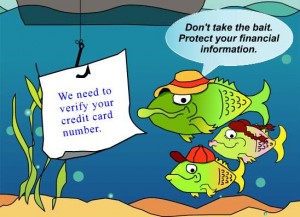 The Royal Canadian Numismatic Association sent email to its members notifying them that on April 24 someone attempted a phishing scam trying to impersonate the RCNA Executive Secretary trolling for information. The RCNA did not send out an email note asking for information and recommended deleting them email.
The Royal Canadian Numismatic Association sent email to its members notifying them that on April 24 someone attempted a phishing scam trying to impersonate the RCNA Executive Secretary trolling for information. The RCNA did not send out an email note asking for information and recommended deleting them email.
Phishing is the term used to describe the attempt to convince someone to reveal personal information by sending them an email that looks like it came from a legitimate source. In this case, the attacker made their email look like it came from the RCNA hoping that members would give up their personal information.
When I am not blogging, meeting with other numismatists, or being with my family, I work in information security for the United States federal government. In my professional life, I have seen a lot of attempted and successful attacks against both government and commercial systems. However, the one attack that is the most difficult to defend are those where humans are convinced to act against their own best interest, such as a phishing attack.
Social engineering attacks are my favorite attacks. One reason is that it helps demonstrate to the organizations that I try to help that security is more than controls, encrypted communications, or anything else you might have read in the news. Security is a process that requires diligence, the same as it does in the real world.
The following are four rules that you can follow to help keep safe online:
Rule #1: Unless you are 100-percent certain that the email is legitimate, do not click on the link!
You will be never 100-percent certain that any email you receive is legitimate so make sure that you are as close as 100-percent certain as possible. One thing you can do is to move your pointer over the link, stop, and wait for the tooltip to show you the address.
Tooltips are those balloon-like popups that will tell you something about the link or element before you press the mouse button. One way to tell that a link is bad is that if the address is not what you think. For example, if the link is supposed to send you to the RCNA website, the tooltip better say that it will send you to rcna.ca. If it does not, then do not click on the link.
When you check the link, the address of the server is the first part of the address. If what should be the server name is not in that area at the beginning of the address, do not click on the link.
One trick the phishers use is to show you what looks like a complicated address in the message, but the link behind it will send you to another website. This is where tooltips can help. If you hover over the address and they do not match, it is an attempt to trick you and you should not click on the link.
If you are using a web-based email client, you can check the address on the status line at the bottom of your browser window. Check to see if the address makes sense is also a good tool. For example, if the link is supposed to be from the RCNA and “rcna.ca” is not the address of the server in the link, then it is a phishing attempt and you should not click on the link.
If you are unsure about the link, then go to your browser and type in the address yourself. Rather than clicking on a suspicious link, you can visit the RCNA website by typing “http://rcna.ca” directly into your browser’s address bar.
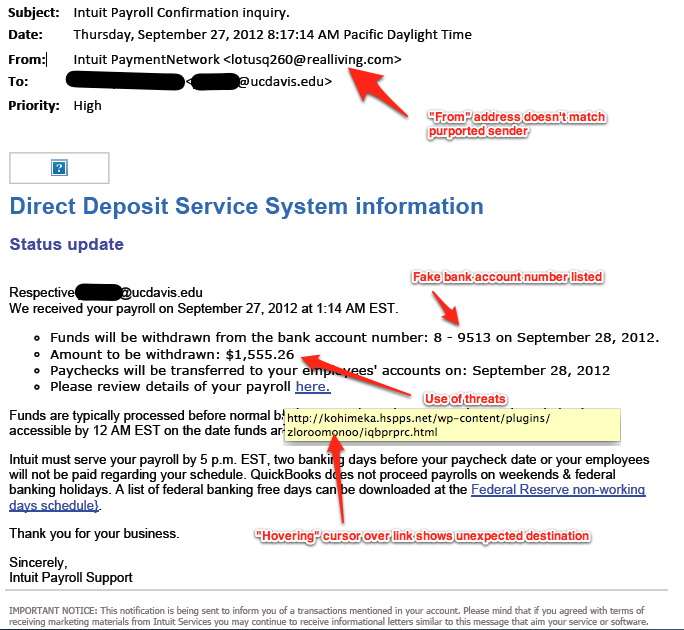
Anatomy of a Phishing email
(courtesy of the University of California-Davis)
Rule #2: No legitimate company or organization will send you a form to fill out and email back
One of the tactics that the phishers use to try to trick you into giving them your personal information is to create a form that looks like it is legitimate. Just as it is easy for someone with moderate skills to fake a web page, they can create a counterfeit form. Not only will the form be counterfeit, but they could also embed programs in that form to steal your information.
Embedded code in documents is called macros. Macros are used to command programs to do something for the user. When used in productive environment, macros can be a wonderful tool to create dynamic documents. But the same instructions that can make macros a productive tool can also be used to do bad things.
Unless you are certain about where the document came from, then do not open a document. If you open the document and the program asks if you should enable or run macros, do not enable macros.
This is not just a problem with word processing document. PDF documents can also deliver very nasty malware (malicious software). Not only can an attacker add macros to a PDF document, but someone can embed the technology called Flash in those PDF. Flash is the technology that helps you see videos and add enhancements to the visual interface of some websites. But Flash can be used to attack your computer system. Opening a PDF file sent by someone you do not know can be as dangerous as a word processing document.
Rule #3: Do not open suspicious attachments
Another trick the attackers try to use is adding an attachment named in a way to try to trick you into opening the file. File names consist of the name of a file followed by a period followed by a file extension. The file extension is used to tell the computer the type of program to open to allow you to work with the file. There are three file extension that very dangerous and should never be opened unless you are absolutely sure who sent them to you: .zip, .exe, and .dmg for Mac users.
The .zip file extension tells the computer that the file is something called a Zip archive. A Zip archive is a file that is formatted to allow it to store many files that are compressed. Zip files are used for many legitimate purposes including being the default format of Microsoft Word’s .docx file. Unfortunately, it can contain files that can be used to attack your system.
One of the types of file that can be included in a Zip archive is an .exe or executable file. Simply, these are programs in the same way that Microsoft Word is a program. Once an executable file is opened, it will do whatever it is programmed to do. Among the things that the program can do is key logging. A key logger reads what you type on your keyboard, what you click on the screen, and in some cases what is displayed on your screen. The key logger will be able to capture the user name and password you entered when you visit any website including your bank’s website. The problem is that when a key logging program is run, you do not know it is watching what you type. Nor do you know that it connects to a server somewhere on the Internet to send the information to the attacker.
While Macs are more difficult to attack, they are not immune. Mac users should never open a file with a .dmg file extension unless you know who sent the file. The Macintosh .dmg file is a disk image file. A disk image file is formatted to look and acts like a disk so that when you double click the file, it will mount on your computer as if you plugged in an external disk drive. Because .dmg files are commonly used to install legitimate software, sometimes the installation can be automatically started. If you allow the installation to continue, it you can install software as dangerous as what I described for the Windows .exe file.
Rule #4: When in doubt, throw it out!
 While all this seems simple to me, I have been in this industry for over 30 years and am used to the complication. The problem with email is that it was developed as a way for researched to communicate by plain text across the Arpanet, the forerunner of the Internet. Essentially, email is a text-based service that has been extended in so many ways that it has created a complicated series of standards that requires a degree in computer science to analyze.
While all this seems simple to me, I have been in this industry for over 30 years and am used to the complication. The problem with email is that it was developed as a way for researched to communicate by plain text across the Arpanet, the forerunner of the Internet. Essentially, email is a text-based service that has been extended in so many ways that it has created a complicated series of standards that requires a degree in computer science to analyze.
Even if you cannot fully analyze whether the message is spam or legitimate, if you have any doubt, then just press the delete button. If the message came from a source you know, contact them off line and ask if the mail is legitimate. If you think the email is from your bank, call the bank and ask. If you think the email is from your credit card company but not sure, call the credit card provider and ask. If you think the email sent from the RCNA is suspicious, call them and make and ask.
A little intuition can be of great help in these circumstances.
Stay safe online and have a good weekend!
Apr 23, 2014 | history, scripophily
If education is a lifelong project, then numismatics is the perfect vehicle for continuing education. If you are only collecting the metal, the plastic surrounding the metal, or the paper without understanding the stories behind them, then you are missing the richness of the story behind those objects. These stories makes those coins, paper, medals, and tokens come alive.
 Let’s take the story of some paper, but not just any paper. This paper are of stock certificates of companies gone by. But not just any companies. These are railroads that are featured on the board game Monopoly.
Let’s take the story of some paper, but not just any paper. This paper are of stock certificates of companies gone by. But not just any companies. These are railroads that are featured on the board game Monopoly.
The railroads in the game are based on real railroads that had an effect on Atlantic City, New Jersey in one form or another. The Reading Railroad and Pennsylvania Railroad served Atlantic City. Although the Baltimore and Ohio (B&O) Railroad did not serve Atlantic City, it was a major feeder railroad to both the Reading and B&O.
But the game has one railroad, the “Short Line” which was claimed to never exist but was a combination of rail lines. But that story bothered me, so I went on a search for what was the real Short Line Railroad.
After several web searches and reading various references, I was lead to the book Monopoly: The World’s Most Famous Game And How It Got That Way by Philip E. Orbanes. According to many, it is the definitive book about Monopoly.
I purchased the book and learned that the Short Line was really a railroad. Well, it was actually the shortened name of a service called the Shore Fast Line, an electric streetcar that ran between Atlantic City and Ocean City. It was one of such short rail services operated by a company named the Atlantic City and Shore Railroad.

Shore Fast Line Ticket
(image courtesy of sjrail.com)
The railroad was founded in 1906 when the West Jersey and Seashore Railroad electrified their main line with the financial help of the Stern and Silverman Syndicate. The new company was chartered as the Atlantic City and Shore Railroad. Although the first cars began to run in 1906, the full line became operational in 1907. The company was dissolved in 1945 after its sale to the Atlantic City Transportation Company, who were buying the small railroads in New Jersey. The new company continued to operate the Shore Fast Line until 1948. Atlantic City Transportation Company stopped running all trains in 1955. They continued to operate busses until 1985 when New Jersey Transit took over the service.
Numismatists who collect scripophilly (the study and collection of stock and bond certificates) who knew about the B&O, Pennsylvania, and Reading railroads and wanted to create a Monopoly collection can start to look for the stock certificate of the Atlantic City and Shore Railroad to properly complete the set. The problem is that the stock certificate for the Atlantic City and Shore Railroad is rare as compared to the other three meaning it can cost significantly more to obtain.
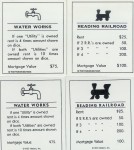 I found an unissued stock certificate for the Atlantic City and Shore Railroad at the site for George H. LaBarre Galleries, Inc., a company in Hollis, New Hampshire. For such a rare stock certificate in excellent condition, the $75 price tag seems reasonable. LaBarre also sells the “Monopoly Game Board Set” with the B&O, Pennsylvania, and Reading Railroad stock certificates.
I found an unissued stock certificate for the Atlantic City and Shore Railroad at the site for George H. LaBarre Galleries, Inc., a company in Hollis, New Hampshire. For such a rare stock certificate in excellent condition, the $75 price tag seems reasonable. LaBarre also sells the “Monopoly Game Board Set” with the B&O, Pennsylvania, and Reading Railroad stock certificates.
With all four certificates, you can add the cards from a real Monopoly game, $200 in Monopoly money for each, plus $200 for the rent that would have to be paid if someone landed on your railroad. You should also find the “Take a Ride on the Reading” and “Advance token to the nearest Railraod and pay owner Twice the Retal…” cards. Put it all together in a frame and hang it in your game room.
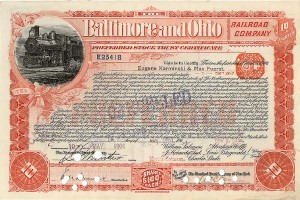
Baltimore & Ohio Railroad.
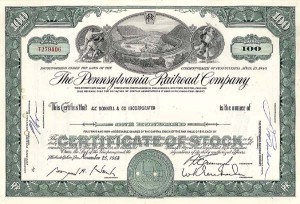
Pennsylvania Railroad stock certificate with famous horseshoe curve train scene.
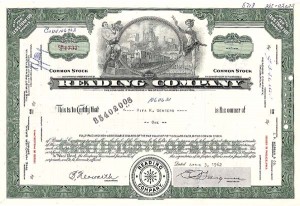
Reading Company, owner of the Reading Railroad.
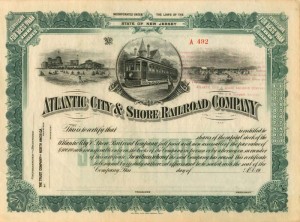
Atlantic City and Shore Railroad, operator of the Shore Fast Line (Short Line in Monopoly)
And with that, you can have a lot of fun with the part of numismatics known as scripophilly!
I have no connection with
George H. LaBarre Galleries. Since I am using their images, I think it is only fair to give the company credit and, hopefully, steer some business their way. So if you are interested in these or other scripophilly items,
shop their online catalog!
Apr 18, 2014 | cash, dollar, pocket change, US Mint
Earlier this week I drove up north to Long Island to spend holidays with relatives. Taking these rides reminds me that we do not live forever. While the family has been expanded with children, the number of relatives at the seder is lower than it was just 10 years ago and these trips are punctuated with trips to the cemetery.
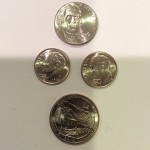
2014 coins found in change during a recent drive to New York
During one of our necessary stops, I was handed some change and noticed that the dimes looked a bit shinier than usual. Quickly zeroing in on the date I saw the “2014” date. After searching all over the Washington, D.C. area for 2014 coins, I find my first somewhere on the road in New Jersey.
Later that evening I emptied my pocket to see what else I could find. In addition to the dime, there was a 2014-P nickel and a surprise.
In 1979, the Susan B. Anthony dollar was released to much fanfare. It was the first “small” dollar coin and was the first U.S. coin to feature a real woman. Prior to the famed suffragette being featured on a coin, the image was that of Lady Liberty in some form. Even the Indian Head cent was not an Indian but Liberty in a native headdress.
But those of us who watch the experiment first hand soon discovered that the coin was too close in size with a quarter. In fact, the color, and reeded edges saw the Susie B. consistently being mistaken for quarters.
Almost as instantly as they appeared, the coins disappeared. Even as the public was willing to try the new coins, the rejection was almost as quick. After three years of production, the coins found a home in Las Vegas where they were used in slot machines. So many coins went unused following their last production in 1981 that was mainly for collectors, production picked up in 1999 after orders for additional coins were made from the vending machine and Las Vegas gaming industry.
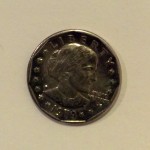
The ’79 Susie B. that I received in change that was probably mistaken for a quarter.
I suspect that someone who previously visited that roadside oasis (how’s that for a description of a rest stop along the New Jersey Turnpike), used one of the vending machines, then spent the dollar thinking it was a quarter. The coin sat in the tray in the cash register until it was time to provide change for my purchase. The cashier, not paying attention to what she was doing, counted the requisite number of coins from the quarter section of the draw. In a rush, I just saw what was the right size coin and dropped it into my pocket on my way back out of the building.
Starting in 2000, the dollar was changed to not only honor Sacagawea but magnesium was added to the metal mix to give the coins a golden color. The color and making the edge smooth made it less possible that the coin would be mistaken for a quarter. Unfortunately, the memory of the failed Susie B. lingers among a significant segment of the population in a way that kept a similar push with the modern Presidential dollars from being successful.
But in this case, finding a Susan B. Anthony dollar made my day!













 While all this seems simple to me, I have been in this industry for over 30 years and am used to the complication. The problem with email is that it was developed as a way for researched to communicate by plain text across the Arpanet, the forerunner of the Internet. Essentially, email is a text-based service that has been extended in so many ways that it has created a complicated series of standards that requires a degree in computer science to analyze.
While all this seems simple to me, I have been in this industry for over 30 years and am used to the complication. The problem with email is that it was developed as a way for researched to communicate by plain text across the Arpanet, the forerunner of the Internet. Essentially, email is a text-based service that has been extended in so many ways that it has created a complicated series of standards that requires a degree in computer science to analyze.







